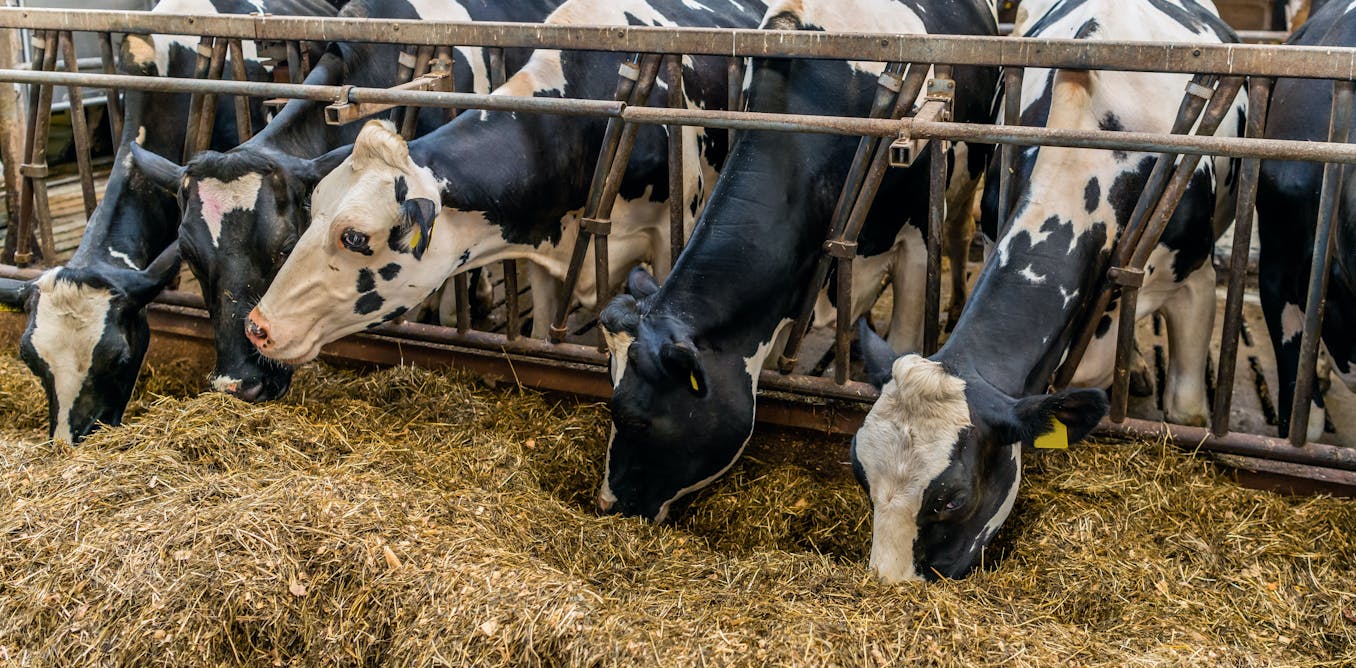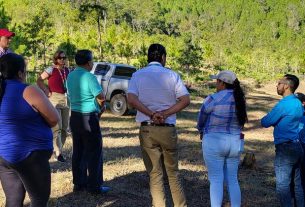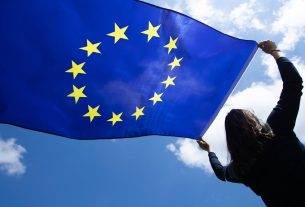|
Getting your Trinity Audio player ready...
|
The crisis sparked by the Trump administration’s tariff policy has forced the world to consider which industries will be hardest hit by future levies on imports and exports.
Soy and corn are two of the US’ main exports to Europe, and are among the products that the European Union (EU) plans to tax in response to US tariffs. This is a reminder of the extraordinary impact that factory farming has on the balance of trade, as these two staple crops are imported in huge quantities to manufacture compound animal feed.
Though not without its advantages, Europe’s adoption of this intensive model of animal agriculture has had serious social, environmental and public health consequences.
The birth of factory farming
The diversification of diets since the early 1950s led to an increase in demand for meat, eggs, milk and dairy products. Agriculture was industrialised to meet this demand, and this in turn led to an increase in imports of compound feed, resulting in an agricultural trade deficit.
This is one of the most characteristic features of the industrial livestock farming that took hold in Western Europe during the second half of the 20th century. Driven by the US model of “agricultural modernisation”, it was part and parcel of reconstructing post-war Europe, and was one of the various offshoots of the Marshall Plan.
For several years now, researchers from various disciplines – including history, veterinary science, sociology and economics – and EU universities have met regularly under the European Rural History Organisation (EURHO) and the Agriculture, Food and Environment Network of the French National Centre for Scientific Research. Our aim is to discuss and debate how European livestock farming has evolved throughout the 20th century.
In addition to a book published in 2023, we have drawn the conclusion that transformations in European farming can be divided into two main eras:
-
An organic model, from 1870 to the 1930s
-
A scientific modernisation from 1945 until the end of the 20th century. This coincides with the emergence of the ongoing environmental and food security crises.
Social, environmental and public health costs
In the decades following the Second World War, livestock farming intensified thanks to scientific and technological innovations and industrial production. Under this new model, state-subsidised agroindustry displaced small and medium-sized livestock farming families as the cornerstone of the agricultural industry.
Technological change and innovation shifted from benefiting producers to the industrial sector, with the goal of providing cheap food for a hungry post-war Europe.
One example of this trend is the use of artificial insemination using semen from selected, highly productive breeds. Other improvements were seen in feeding – high-yield feed, silage, and so on – and technological developments such as automatic milking machines and refrigerated tanks in the dairy industry.
Industrial livestock farming was introduced at different rates in different regions of Western Europe. It brought with it a high social, economic and cultural cost, as only the most well-funded farms with the most land survived.
Towards the end of the 20th century, people began to question the industrial model that still predominates. This was not only for environmental reasons such as its heavy water use, waste management, deforestation, massive use of diesel, but also for reasons related to public health and the growing financial burden it placed on farmers.
The mad cow diease crisis in the mid-1990s and bird flu in the first decade of the 21st century alerted civil society and public administrations to the health risks for consumers resulting from the industrialisation of livestock farming.
At the turn of the century, some countries, such as Sweden and the UK, began to limit the use of “antobiotic growth promoters” because of their link to the increasing resistance shown by bacterial diseases in cattle, a problem of growing concern in more areas. They were banned by the EU in 2006.
Read more:
Antibiotic resistance dates back millions of years, with important lessons for modern medicine
Organic alternatives
From the end of the 19th century, very similar processes of livestock specialisation took place across Europe, from Frisia to Galicia, Denmark and northern Italy. Then, too, there was intensification of production, as well as improvements in genetics, feeding, animal health and hygiene, all fed by the constant interplay between new scientific knowledge and the interests of farmers.
The difference between this era and the the post-1945 world was not so much “what” as “how”. Livestock farming was strongly anchored to organically based agriculture and to the land itself. Livestock farmers were also the industry’s protagonists, as opposed to mere delegates of agribusiness or the state.
Local and regional livestock cooperatives were key to the improvements in livestock farming during the first third of the 20th century, and in some areas they were capable of creating powerful processing industries.
Their relationship with technology and political institutions was fluid – rooted partly in the great electoral power of rural society. This gave rise to a collaborative and bidirectional model of livestock improvement that involved civil society, scientists and institutions.
The challenge for today’s livestock farming therefore has much to do with both models. Will we continue to rely on massive imports of compound feed and high energy consumption, or will we update historically proven, sustainable livestock farming practices?



